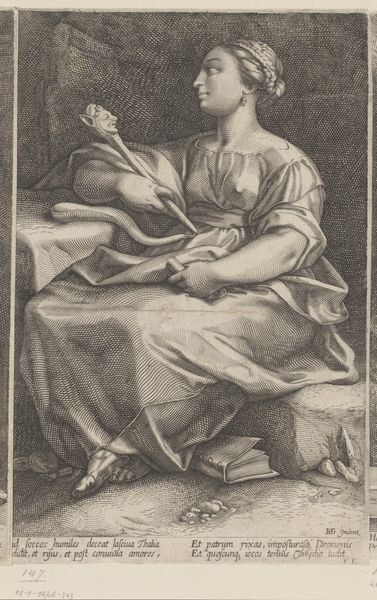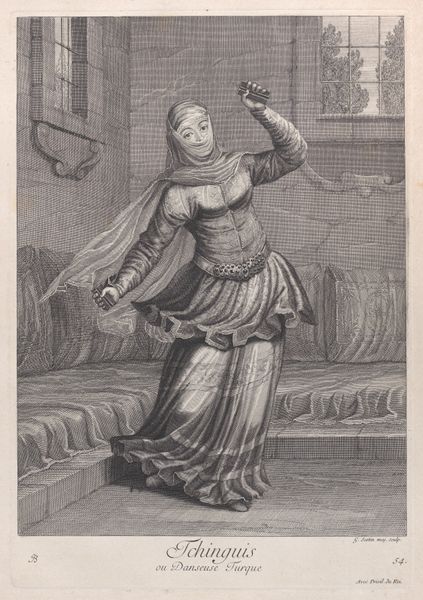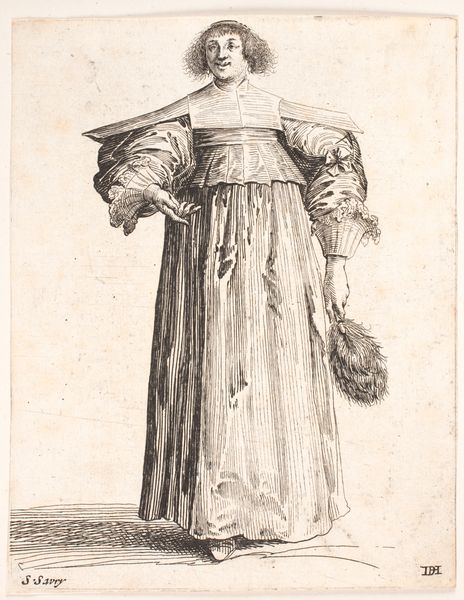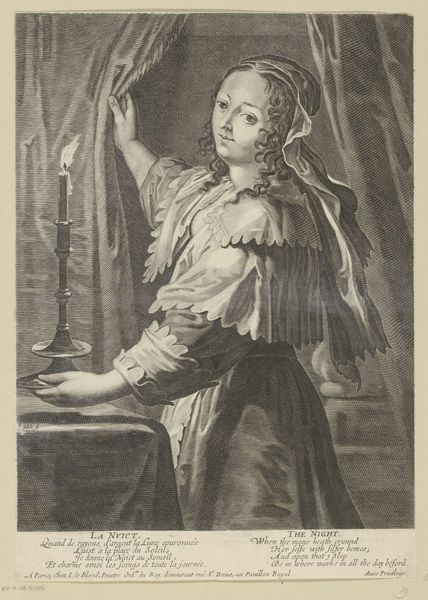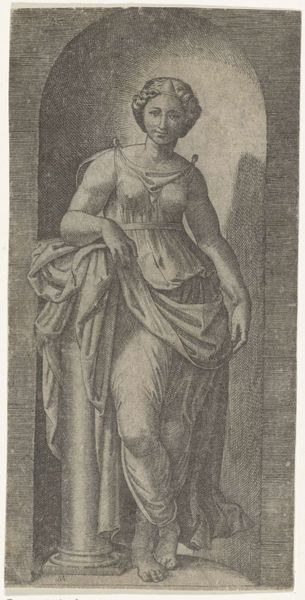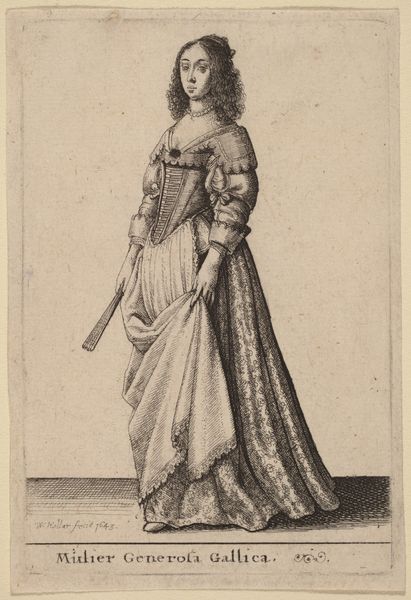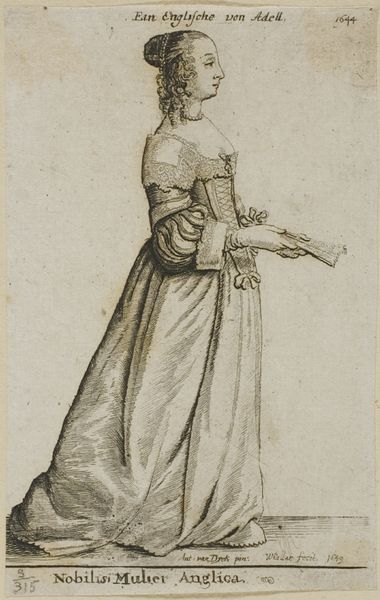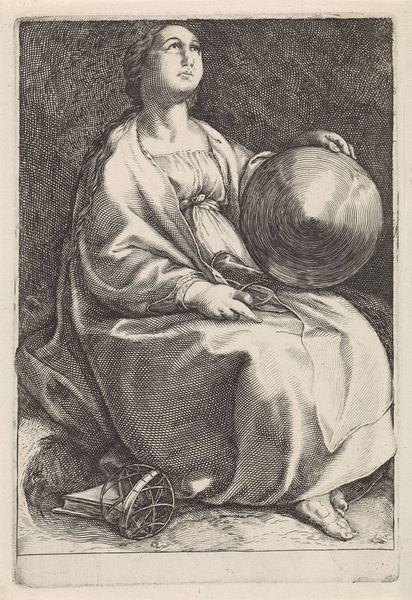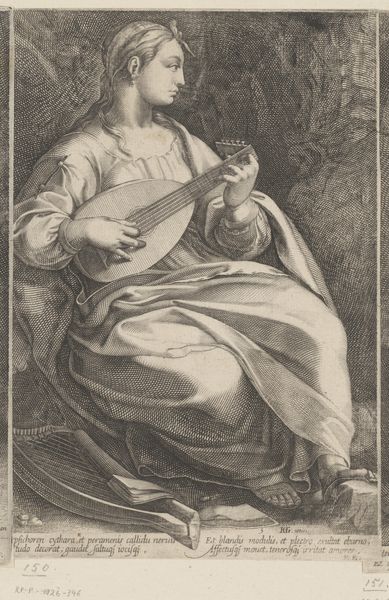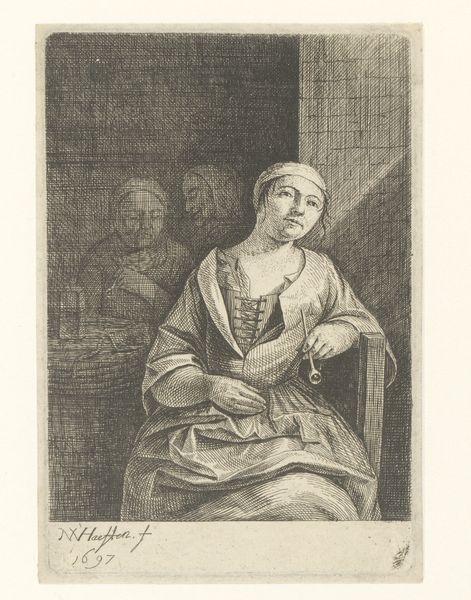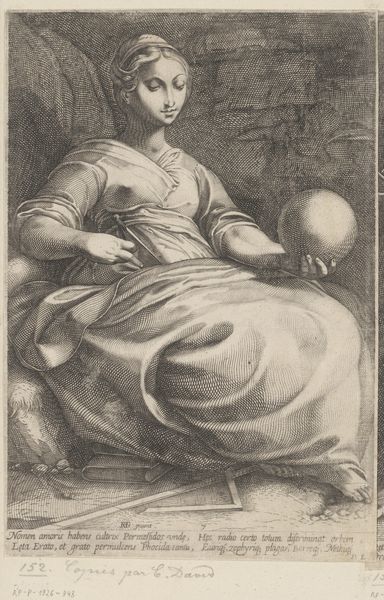
drawing, print, engraving
#
portrait
#
drawing
#
baroque
# print
#
figuration
#
history-painting
#
engraving
Dimensions: Sheet (Trimmed): 12 7/8 × 8 13/16 in. (32.7 × 22.4 cm)
Copyright: Public Domain
Editor: Here we have Lucas Vorsterman I's "Saint Barbara," created sometime between 1610 and 1675. It’s an engraving, and the incredible detail in the fabrics is really striking. What stands out to you when you look at this print? Curator: Immediately, the production process is evident. Think about the labor involved in creating the metal plate, the skill required to incise such fine lines that convincingly simulate different fabric weights. Where did Vorsterman learn his craft, and what socio-economic forces enabled him to acquire these tools and skills? Editor: That's a good point, I hadn't considered the apprenticeship and access to tools needed for engraving. The cloth looks so opulent, and that requires time, materials and expertise too! Curator: Precisely. And how does this engraving circulate? Who is its intended audience? Was this a mass-produced devotional image, or aimed at a wealthier clientele? Notice also the tower looming behind her. It alludes to the means of her martyrdom - was it typical for printmakers of the era to reference torture, imprisonment, and execution in prints intended for household display? What is the relation of production to this gruesome martyrdom? Editor: I guess seeing it more widely circulated could normalise the stories of female saints and the brutal means by which they are remembered? How widely would engravings such as this have been seen at the time? Curator: Exactly, mass distribution is key. Perhaps affordable prints such as this encouraged greater devotion to Saint Barbara among a growing merchant class, where consumption itself became a new form of visual veneration? What impact would printed imagery have on iconoclasm? Editor: That’s fascinating! I now see how the creation and distribution of this print plays a big role in understanding its message and social impact. Thanks, I really appreciate you pointing that out! Curator: My pleasure. Considering art as both product and process helps unlock richer meanings, and connects artistic creation with the world around it.
Comments
No comments
Be the first to comment and join the conversation on the ultimate creative platform.
